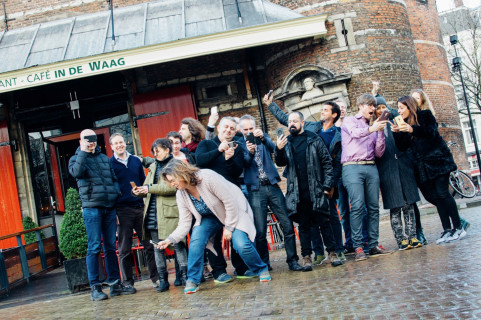Making Sense will show how open source software, open source hardware, digital maker practices and open design can be used by local communities to make sense of their environments.
Making Sense

What is the goal of the project?
Official bodies typically measure environmental qualities with sparse networks of high quality sensors, and the resulting data are analysed to inform policy and regulations. At the same time, with the exception of extreme cases like smog pollution, citizens tend to be unaware of the health threats that they are subjected to on a daily basis. Moreover, they lack the means to act on their own behalf. By encouraging and enabling the creation of bottom up sensor networks, and sharing the resulting data and knowledge, the EU-funded project Making Sense aims to add to the available data and understanding, and contribute to a healthier and cleaner environment.
Making Sense will show how open source software, open source hardware, digital maker practices and open design can be used by local communities to make sense of their environments. It will develop a Making Sense Toolkit based on the Smart Citizen platform for bottom up citizen science, developed at Fablab Barcelona. The toolkit will be developed and tested in nine pilots in Amsterdam, Barcelona and Pristina.
What is the result of the project?
Based on nine pilots in three cities, we will develop framework for participatory environmental maker practices. It will show how to provide citizens and communities with tools to enhance their everyday environmental awareness, to enable active intervention in their surroundings, and to change their individual and collective practices. And finally we will develop will develop a framework for citizen co-inquiry and action towards transformation of their surroundings.
Who initiated the project and which organizations are involved?
Making Sense will run from November 2015 to the end of 2017. The consortium consists of Waag Society (Lead Partner - Netherlands), University of Dundee (UK), Peer Educators Network and Science for Change (Kosovo), Institute for Advanced Architecture of Catalonia – IAAC (Spain), and the EU Joint Research Centre (Belgium).
What is the next step?
The nine pilots are carried out and will be studied to develop a uniform, widely applicable framework for bottom-up sense making.
What can other cities learn from your project?
Making Sense piggy-backs on the experience of five international partners, including three renowned labs: Waag Society's Smart Citizens Lab, the Institute of Advanced Architecture of Catalunya, and the Peer Educators Network. Together, they have a wealth of practical knowledge on how to involve and empower people to take responsibility for the city they live in. In each city, local partners are involved to tackle pressing problems.





I would be interested to look for possibilities to connect the local presence of the mailmen to your project. The mailmen is in every street, at every door five days a week and has a smartphone in his pocket. To what extent could we improve the making sense network by adding the mailmen to the community?